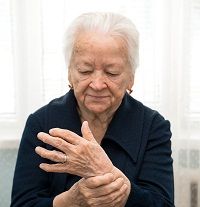Article
Pivotal Discovery Helps Explain Neuropathic Pain
Author(s):
Not only have researchers uncovered a key factor that drives neuropathic pain, they have also identified a strategy to reverse it.

Not only have researchers uncovered a key factor that drives neuropathic pain, they have also identified a strategy to reverse it.
A team from the University of California, Davis, revealed that endoplasmic reticulum stress, or ER stress, is a driving force behind neuropathic pain. Lead researchers Bora Inceoglu, PhD, and Ahmed Bettaieb, PhD, and colleagues found that the way the body breaks down particular components alters pain signaling.
“This is a fundamental discovery that opens new ways to control chronic pain,” co-author Bruce Hammock, PhD, said in a news release.
Previous work by the team determined that a class of natural bioactive lipids cause analgesic effects. However, when the lipids are inhibited by soluble epoxide hydrolase (sEH), the soothing effects from epoxy fatty acids (EpFAs) disappear.
In the study published in the Proceedings of the National Academy of Sciences, the team used diabetic mice to analyze pain signaling. When ER stress was activated it provided pain signals to the peripheral nervous system.
“In health animals, turning on the ER stress signal transduction cascade generates an immediate but lasting and site restricted painful phenotype, which is reversible by ER stress blockers,” the authors explained.
With the use of a chemical chaperone and sEH restrainer, the neuropathic pain was reversed. The findings could lead to medications for not just chronic pain from neuropathy, but other conditions such as diabetes, shingles, multiple sclerosis, and trauma.
“The rapid occurrence of pain behavior with inducers equally rapid reversal by blockers and a natural incidence of ER stress in diabetic peripheral nervous system (PNS) argue for a major role of the ER stress pathways in regulating the excitability of the nociceptive system,” the authors wrote.
The researchers are already in the process of finding ways to target the specific ER stress pathway in order to control pain activity and provide relief for patients.
“This search is already underway in a number of laboratories working on cancer and other diseases,” Hammock confirmed.




